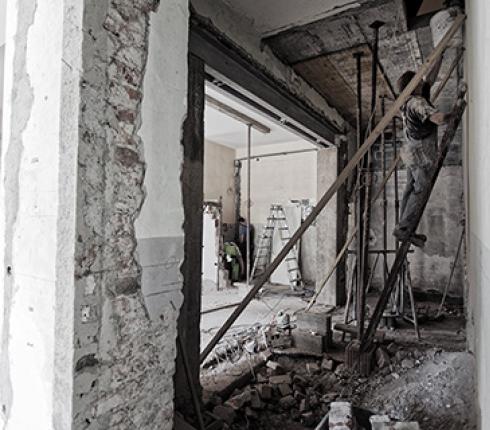Will the new rules on rent reduction result in a lower rental yield for landlords?
Rent reduction rules are part of the Blackstone intervention. In this article, we look at what it means for the landlord when the rent for radically modernized tenancies must not exceed the value of the tenancy, and when special attention in future must be paid to comparable tenancies where the rent has been approved by the Rent Tribunals or the courts. As a landlord, you are facing a situation where the many new rules of the Blackstone intervention will have a fundamental impact on your business – which is why we will equip you and give you our best recommendations on how to deal with the new reality from 1 July 2020.

Today, it is broadly accepted that the rent for radically modernized tenancies exceeds the value of the tenancy by up to approx. 10%. This is based on the recognition that the value of the tenancy is estimated and therefore not an exact amount.
From 1 July 2020, the rent for radically modernized tenancies must not deviate from the value of the tenancy. If the rent exceeds the value of the tenancy, the tenant can claim a rent reduction. However, this applies only to tenancy agreements entered into after 1 July 2020.
There is no lower limit to a claim for rent reduction. If the rent is increased by 1% due to the development of the net price index, without a corresponding increase of the value of the tenancy, but, for example, only by 0.7%, the tenant may claim a rent reduction.
More tenants will thus have the option of claiming a rent reduction, as less will be required to claim a rent reduction. Therefore, the rule will likely give rise to an increased number of cases concerning rent reduction, just as it implies a risk of a lower rental yield on the property.
Today, if the Rent Tribunal finds for a tenant, the landlord must pay DKK 2,180 to the Rent Tribunal. From 1 July 2020, the amount will rise to DKK 6,000.
The increase is intended to help financing the Rent Tribunals, just as landlords, due to the increase, are expected to refrain from bringing unnecessary cases before the Rent Tribunal.
How is the value of the tenancy determined?
When the courts assess the value of the tenancy, comparable tenancies are a crucial evidence. The Blackstone intervention introduces a new (evidence) rule, which means that comparable tenancies tested by the Rent Tribunal or the courts will be of greater probative value than untested comparable tenancies.
In the past, courts have also attached greater importance to tested comparable tenancies of relevance, but in the future, untested comparable tenancies must be disregarded if there is a sufficient number of tested comparable tenancies.
The new rules are likely to result in cases concerning the size of the rent becoming more resource-consuming and thus more expensive to test, as both the tenant and the landlord may have an interest in precluding untested comparable tenancies.
The new rules will enter into force on 1 July 2020 and will include tenancy agreements entered into both before and after 1 July 2020.
Requirements for inspection before modernization
In order to determine the rent according to the value of the tenancy, the cost of modernization must be of a certain size. The modernization must have significantly increased the value of the tenancy, and the tenancy must therefore have improved considerably.
In order to ensure that these criteria are met, it will be a future requirement that the Rent Tribunal inspects a tenancy before it is modernized. Based on the inspection, the Rent Tribunal assesses whether the tenancy is in a condition which makes it possible to significantly increase the value of the tenancy. If the Rent Tribunal considers that this is not possible, the landlord will be precluded from fixing the rent according to the rules on the value of the tenancy due to a radical modernization.
Potential zigzag course for assessments
The idea of establishing the condition of the tenancy before the modernization is initiated makes perfect sense. However, it is problematic that the assessment will be made by the Rent Tribunal without the assistance of a building expert and, in addition, that no guidelines have been drawn up for what the Rent Tribunals should attach importance to in their assessments. Unfortunately, this implies a potential zigzag course where the Rent Tribunals will administer the rules differently.
When a landlord has requested an inspection, the Rent Tribunal has four weeks to carry out the inspection and subsequently two weeks to forward its decision to the landlord. The decision will be valid for three years. If the landlord does not initiate the modernization within these three years, the landlord must arrange for a new inspection.
NJORD recommends
It is more important than ever for landlords to have a strong knowledge and documentation of rent levels. Partly because more cases concerning the size of the rent are expected, and partly because of the new rules on the use of comparable tenancies. The importance is not diminished by the fact that a lost case can become a catalyst for several cases due to the landlord’s duty to inform tenants of a lost case.
We therefore recommend seeking expert advice in this type of cases.
NJORD conducts many cases about the size of the rent, and we have great knowledge and strong documentation of rent levels. If you need assistance in assessing the rent level for your tenancies or are facing a claim for a rent reduction from a tenant, we are ready to assist you.






